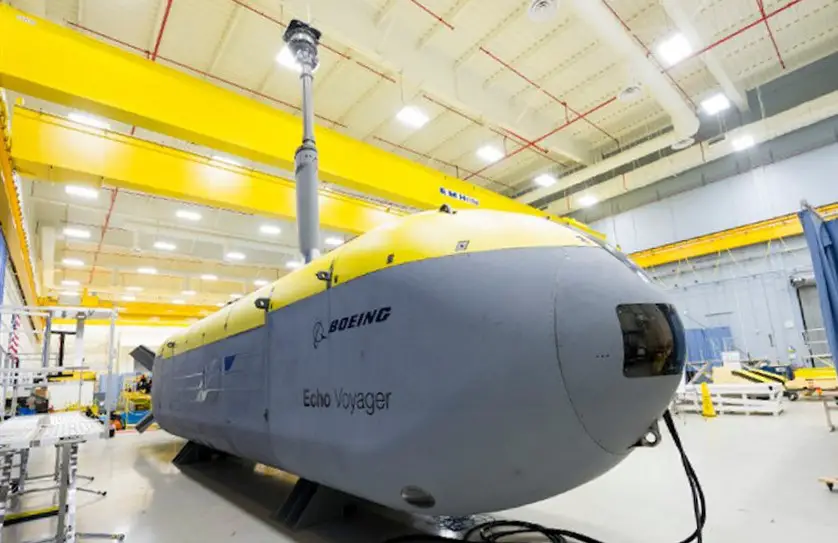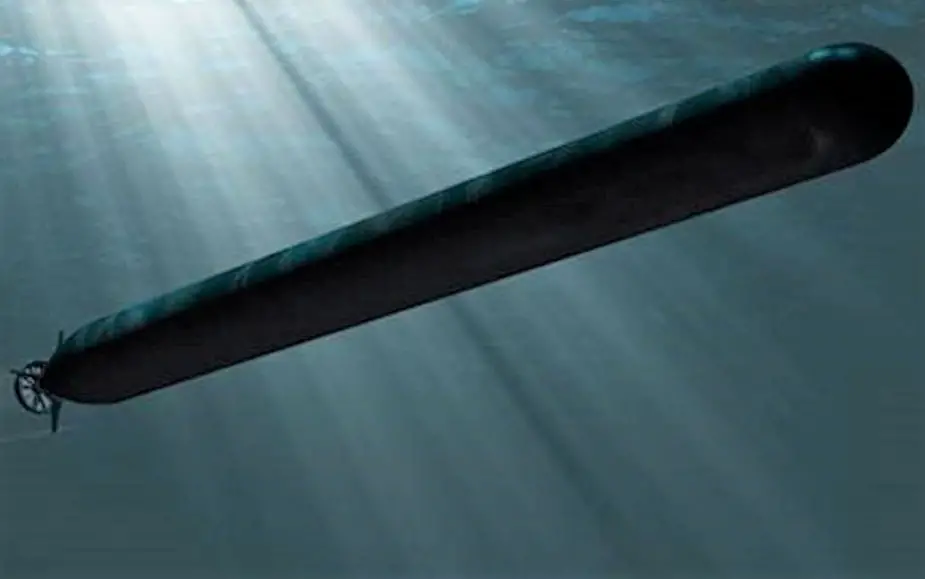Breaking news
Boeing and Lockheed Martin awarded contract modification for XLUUV Extra Large Unmanned Undersea Vehicle.
The U.S. Navy selected Boeing and Lockheed Martin for the first phase of the XLUUV programme with the companies securing design contracts in September 2017. The programme aims to create an unmanned system that can operate independently at sea for months. The design contract awarded to Lockheed Martin was worth $43.17m, while the one awarded to Boeing was approximately $42,27m.
Follow Navy Recognition on Google News at this link
 U.S. Navy's XLUUV (Picture source: Boeing)
U.S. Navy's XLUUV (Picture source: Boeing)
Boeing is awarded an $11,096,697 cost-plus-fixed-fee modification to previously awarded contract N00024-17-C-6307 to exercise options for engineering support services in support of the Extra Large Unmanned Undersea Vehicle (XLUUV) program. This option exercise is for engineering services under the existing contract that will be used to further develop and study additional capabilities, payloads, operational uses, and deployment scenarios for the XLUUV program. Work will be performed in Huntington Beach, California (75%); and Cockeysville, Maryland (25%), and is expected to be completed by September 2021. Fiscal 2020 research, development, test and evaluation (Navy) funding in the amount of $4,836,002 will be obligated at time of award and will not expire at the end of the current fiscal year. The Naval Sea Systems Command, Washington, D.C., is the contracting activity.
***
Lockheed Martin, Rotary and Mission Systems, is awarded a $7,131,524 cost-plus-fixed-fee modification to previously awarded contract N00024-17-C-6308 to exercise options for engineering support services in support of Unmanned Undersea Vehicle (UUV) subsystem development. This option exercise is for engineering services under the existing contract that will be used to develop and study UUV subsystems and concepts initially developed under the Extra Large Unmanned Undersea Vehicle (XLUUV) program, including navigational capabilities, autonomy and payload deployment. Work will be performed in Riviera Beach, Florida, and is expected to be completed by September 2021. Fiscal 2019 research, development, test and evaluation (Navy); and fiscal 2020 research, development, test and evaluation (Navy) funding in the amount of $1,900,987 will be obligated at time of award and funds in the amount of $78,882 will expire at the end of the current fiscal year. The Naval Sea Systems Command, Washington, D.C., is the contracting activity.
 U.S. Navy's XLUUV (Picture source: Boeing)
U.S. Navy's XLUUV (Picture source: Boeing)
The U.S. Navy intends to procure a total of nine XLUUV s under the programme. Boeing won a $43m contract in the second phase of the competition to build, test and deliver four XLUUVs and related support elements in February 2019. A contract modification worth $46.7m was awarded to the company in March 2019 for the production of an additional prototype vehicle, bringing the total contract value to $274m. Boeing partnered with Huntington Ingalls Industries (HII) to design and develop new unmanned undersea vehicles for the US Navy’s XLUUV programme in June 2017.
XLUUV is an autonomous extra-large unmanned undersea vehicle (XLUUV) designed to meet the growing demand for undersea operational awareness and payload delivery. The US Navy will use the XLUUV for potential capabilities such as mine countermeasures, anti-surface warfare (ASuW), anti-submarine warfare (ASW), electronic warfare (EW) and strike missions. Key attributes include extended vehicle range, autonomy, and persistence. Orca XLUUV will transit to an area of operation; loiter with the ability to periodically establish communications, deploy payloads, and transit home.
 XLUUV Orca is an autonomous extra-large unmanned undersea vehicle (XLUUV) designed to meet the growing demand for undersea operational awareness and payload delivery (Picture source: Lockheed Martin)
XLUUV Orca is an autonomous extra-large unmanned undersea vehicle (XLUUV) designed to meet the growing demand for undersea operational awareness and payload delivery (Picture source: Lockheed Martin)


























